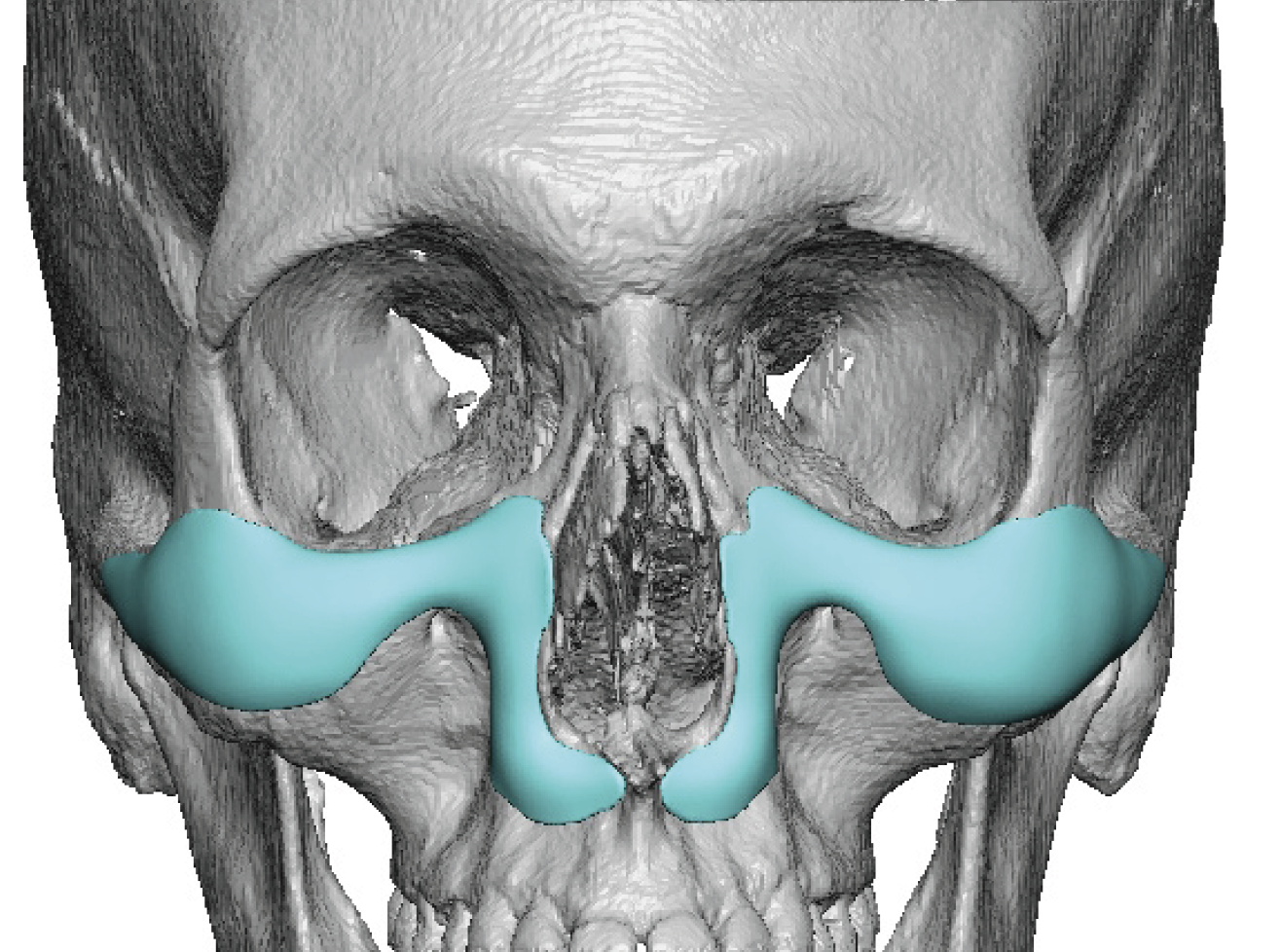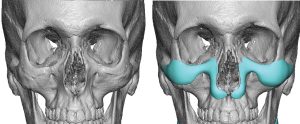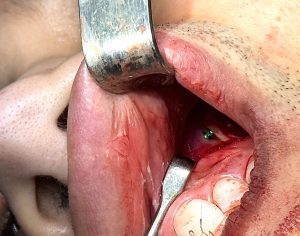Background: Custom midface implants create new possibilities for adding increased projection to the middle third of the face. Unlike the numerous off-the-shelf implants which are available (cheek, tear trough, premaxillary and paranasal implants), the custom midface implant provides a global enhancement effect. It is somewhat similar to a LeFort III advancement without dentoalveolar and nasal bone movements. Infraorbital-malar-maxillary bony coverage pushes the midface soft tissues forward for a one dimensional projection increase.
Custom midface implants are placed through an intraoral approach with a high vestibular incision between the canines This may be supplemented with a lower eyelid incision if the infraorbital component saddles the rim in any significant way. With the intraoral approach the infraorbital nerve is approached inferiorly and the challenge of the dissection is across the top of the nerve. Getting the implant around the nerve once the dissection is completed is the next challenge.
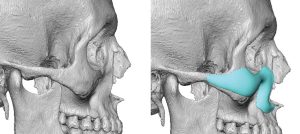
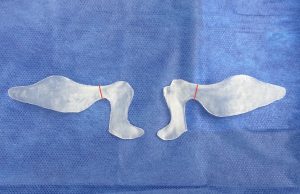
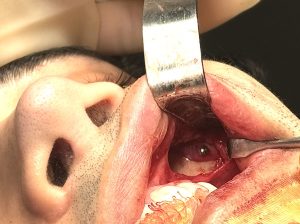
Key Points:
1) One design of a custom midface implant is a pyriform aperture-infraorbital-malar perimeter style implant which avoids the concave maxillary surface.
2) Placement around the infraorbital nerve is one of the challenges in this type of custom midface implant which has a natural nerve relief built into its design.
3) Splitting the implant above the nerve avoids undue stretching on the nerve but adds to placement challenges with now a 4 piece implant instead of a two piece implant.
Dr. Barry Eppley
World-Renowned Plastic Surgeon

